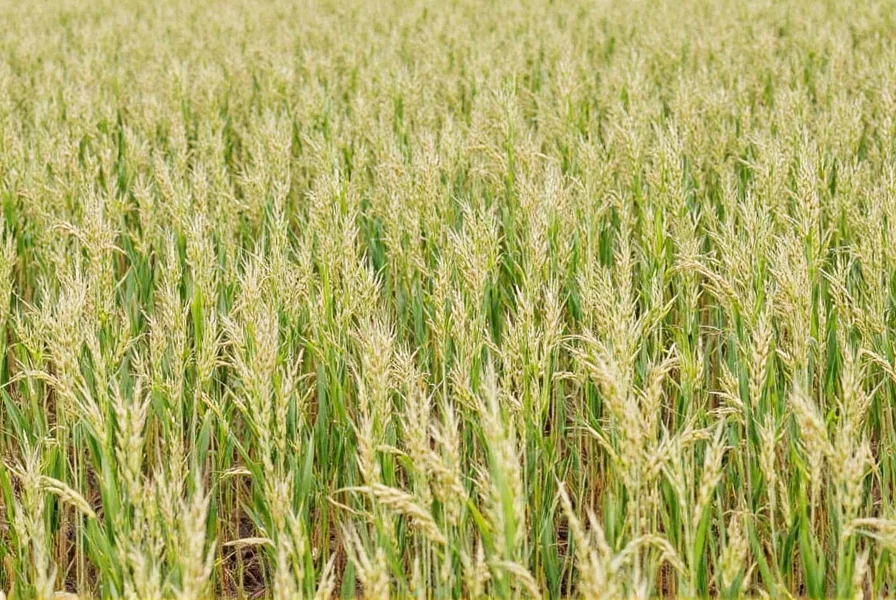Rice, Rice, Baby! A Spicy Guide to American Rice Farming
When it comes to the world of spices and culinary arts, few ingredients are as versatile or foundational as rice. But have you ever stopped to think about how this humble grain is grown? In the United States, rice farming isn’t just a tradition—it’s a booming industry with its own unique methods, challenges, and secrets. If you're a spice enthusiast or a food professional looking to dive deeper into the world of grains, this guide will take you on a flavorful journey through American rice farming.
Table of Contents
- What Is American Rice Farming?
- Top 5 Tips for Understanding American Rice Farming
- A Deep Dive into the Process
- Buying Guide: Tools and Products for Rice Enthusiasts
- Conclusion
What Is American Rice Farming?
Let’s start with the basics. American rice farming refers to the cultivation of rice in the United States. While countries like China, India, and Thailand dominate global rice production, the U.S. plays a significant role, especially in regions like Arkansas, Texas, Louisiana, and California. These states are known for their ideal conditions—warm climates, fertile soil, and access to water sources—that make them perfect for rice cultivation.
Rice is a staple in many American diets, and understanding how it's grown can give you a new appreciation for every bowl of risotto, sushi, or pilaf you make. Whether you’re a chef, a home cook, or just someone who loves to experiment with spices, knowing where your rice comes from can add depth to your cooking experience.
Top 5 Tips for Understanding American Rice Farming
- Know the Types of Rice Grown in the U.S. The U.S. grows both long-grain and short-grain varieties, including basmati, jasmine, and arborio. Each type has different uses and flavors, so knowing which one you’re working with can help you pair it with the right spices.
- Understand the Growing Conditions. Rice needs a lot of water and warm temperatures. Most U.S. rice farms use irrigation systems to simulate the wetland environments that rice thrives in.
- Be Aware of Seasonal Cycles. Rice planting typically starts in the spring, and harvesting occurs in the fall. Knowing these cycles helps you plan when to buy or use your rice for maximum freshness.
- Look for Sustainability Practices. Many American rice farmers are adopting eco-friendly techniques to reduce water usage and protect local ecosystems. This is great news for environmentally conscious consumers.
- Support Local Farmers When Possible. Buying locally grown rice not only supports the community but also ensures you get fresh, high-quality grains that are often better suited to your regional cuisine.
A Deep Dive into the Process
Now that we’ve covered the basics, let’s take a closer look at the actual process of American rice farming. From planting to harvest, each step requires precision, patience, and a deep understanding of the land.
The Lifecycle of a Rice Plant
Rice starts as a seed planted in flooded fields. It takes about 100-180 days for the plant to mature, depending on the variety. During this time, farmers must manage water levels carefully to ensure optimal growth. Once the plants are ready, they are harvested, and the grains are separated from the stalks in a process called threshing.
Water Management
One of the most important aspects of American rice farming is water management. Unlike traditional dry farming, rice is a water-intensive crop. Farmers use controlled flooding systems to mimic natural wetlands, which not only nourishes the plants but also helps suppress weeds and pests.
Modern Techniques and Technology
Today, many rice farms use advanced technology such as GPS-guided tractors, drone monitoring, and automated irrigation systems. These tools help increase efficiency, reduce waste, and improve yield without compromising quality.
Buying Guide: Tools and Products for Rice Enthusiasts
If you’re serious about rice, you’ll want to invest in the right tools and products. Whether you're cooking for a crowd or experimenting in the kitchen, here are some must-have items:
1. Rice Cooker
- Features: Auto shut-off, multiple settings, steam function.
- Advantages: Perfect for consistent results, even for beginners.
- Use Cases: Everyday cooking, special occasions, meal prep.
- Target Audience: Home cooks, busy professionals, families.
- Suitable Occasions: Weeknight dinners, potlucks, gatherings.
2. Rice Mill (for Whole Grains)
- Features: Grain processing, husking, polishing.
- Advantages: Great for those who want to process their own rice.
- Use Cases: Small-scale farming, artisanal cooking, DIY enthusiasts.
- Target Audience: Farmers, chefs, hobbyists.
- Suitable Occasions: Specialty meals, farm-to-table events, educational demonstrations.
3. Rice Storage Containers
- Features: Airtight, moisture-resistant, BPA-free.
- Advantages: Keeps rice fresh longer, prevents pests.
- Use Cases: Storing large quantities, pantry organization.
- Target Audience: Households, restaurants, bulk buyers.
- Suitable Occasions: Long-term storage, seasonal cooking, meal planning.
4. Rice Measuring Cups and Scales
- Features: Precision, durability, easy to clean.
- Advantages: Ensures accurate measurements for perfect texture and flavor.
- Use Cases: Cooking, baking, testing recipes.
- Target Audience: Chefs, bakers, recipe developers.
- Suitable Occasions: Special dishes, restaurant menus, cooking classes.
5. Rice Varieties and Spices for Pairing
- Features: Organic, non-GMO, heirloom options available.
- Advantages: Adds depth and complexity to any dish.
- Use Cases: Enhancing flavor profiles, creating unique blends.
- Target Audience: Spice lovers, foodies, chefs.
- Suitable Occasions: Dips, sauces, seasoning mixes, gourmet cooking.
Conclusion
From the floodplains of Arkansas to the sun-drenched fields of California, American rice farming is a vital part of the country’s agricultural landscape. Whether you're a seasoned chef or a curious food lover, understanding how rice is grown adds a whole new dimension to your cooking and appreciation of this essential grain.
So next time you reach for a bag of rice, remember that it’s more than just a side dish—it’s the product of hard work, innovation, and tradition. And if you're really passionate about it, maybe even consider supporting a local rice farmer or trying your hand at growing a few grains yourself.












 浙公网安备
33010002000092号
浙公网安备
33010002000092号 浙B2-20120091-4
浙B2-20120091-4